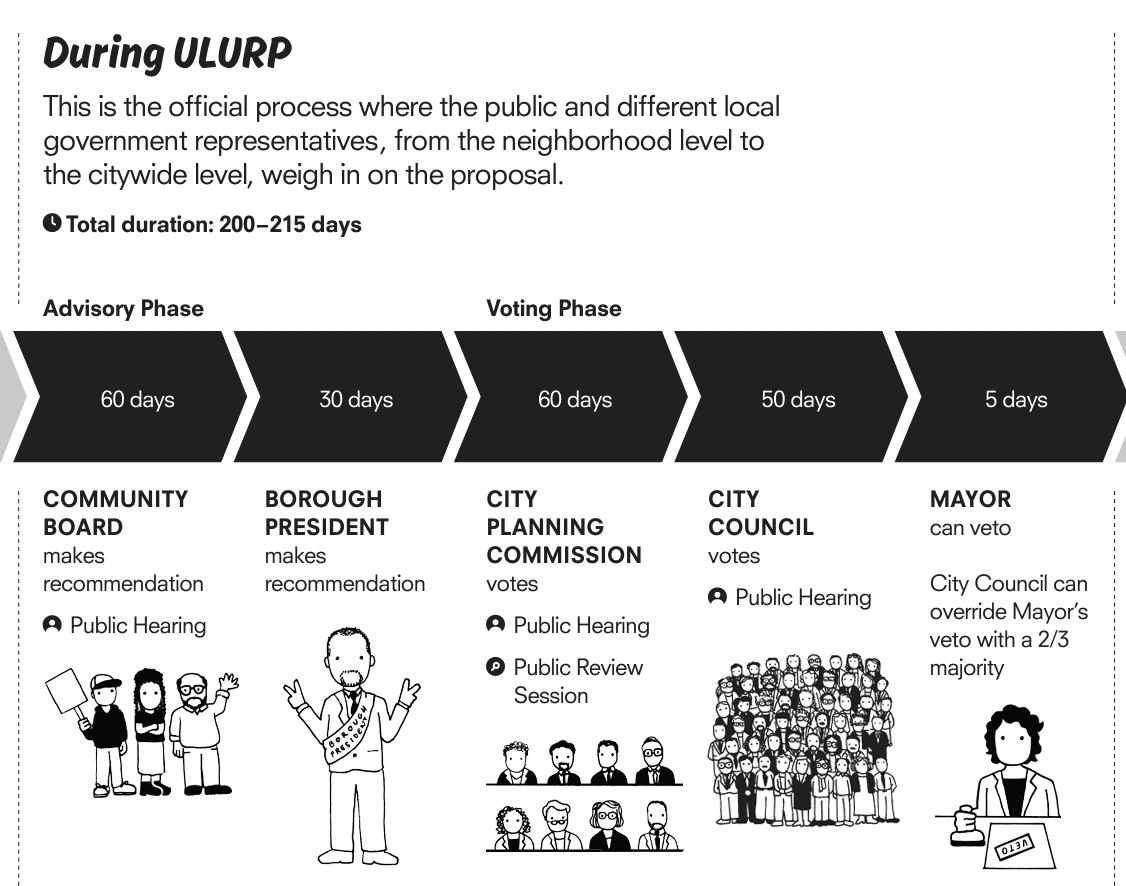Creating an Urban Renewal Area Plan
Beginning in 1949, federal law allowed cities across the country to declare that a piece of land was “blighted” - a subjective determination made by government agencies that often led to the displacement of low-income people of color. Cities could then acquire the “blighted” land, relocate the people living there, raze the homes and buildings that were already in place, and make way for new public and private development. Development in the plan areas sometimes happened, like Lincoln Center, and sometimes didn’t, like many still-vacant lots in East New York and Bushwick.
Many urban renewal plans remain active today, and where they exist, they set restrictions on what can be built in an area. NYC continues to create Urban Renewal Areas, too. An Urban Renewal Area Plan designation allows the government to force private owners to sell their property to the government. This can be used to combat warehousing vacant property, as was done when the City created an Urban Renewal Area to encompass a mostly-vacant strip mall in Downtown Far Rockaway in 2017.
New Urban Renewal Area Plan designations have to be approved via the Uniform Land Use Review Procedure (ULURP), which is written into the NY Charter. ULURP is designed to ensure elected and appointed officials review big land-use decisions in public. In NYC, the Department of Housing Preservation and Development (HPD) is responsible for urban renewal planning. To create a new urban renewal plan, HPD must file an application with the Department of City Planning (DCP). Once DCP considers the application ready, it certifies the application as complete and ready for review by the corresponding Community Board, Borough President, City Planning Commission, City Council, and the Mayor. The Plan is passed only after these reviews are complete. In ULURP, the opinions of a Community Board and a Borough President’ are advisory only, while the City Planning Commission, City Council, and the Mayor can put a stop to the process.
Below is a guide to all the different players in the process, created by our friends at the Center for Urban Pedagogy.

